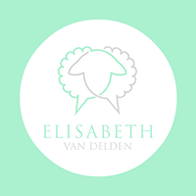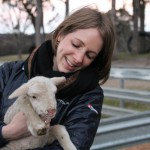How to use wool hashtags to boost your social media posts

Most popular wool hashtags and how to use them
Nowadays we are all familiar with using hashtags. I use wool hashtags all the time when I post on social media. However, I was starting to question myself if I was actually using them in the right way. I was also wondering if I was using the right wool hashtags or if there were better ones around. That’s why I did a little bit of research on wool hashtags and this is what I found.
What is a hashtag
Just to reassure ourselves that we really know what a hashtag is. A hashtag is a way of categorising and grouping content on social media.
Hashtags are used on social media platforms such as Twitter, Facebook, Instagram, Google+ and Pinterest. Typically hashtags are used to describe the subject, genre or emotion behind a post.
Twitter hashtags focus more on topics and groups, while hashtags used on social platforms focused on photo and video such as Instagram fulfill more the purpose of describing and labelling the content of the photo.
Use only a limited number of hashtags
Intuitively speaking using more hashtags should give us more exposure. Indeed many people tend to use a lot of hashtags, sometimes even more than the number of words in their actual post. Social media experts, however, recommend to not use more than two. Avoid messages like this: #Love this #cool #wool #dress. #Choosewool and rather go for this: Love this cool #wool dress. #Choosewool
Using too many hashtags dilutes your message and your followers as you may gain followers who are actually not your target group. Research also showed that engagement with posts drops once more than 2 hashtags are used. Put your focus on creating great content and not finding all the possible hashtags you could use.
Integrate the hashtag to your post
Where possible integrate your hashtags in your post instead of attaching them to the end of your post. This example explains what I mean:
- ‘I love this new cool #wool dress!’ (Hashtag is integrated)
- ‘I love this new cool wool dress #wool (Hashtags added to the end)
When you integrat your hashtags it shortens your messages which is especially helpful on Twitter.
Use hashtags that make sense
In the wool industry we have quite specific terms that make sense to us such as the wool processing terms of ‘finishing’ or ‘combing’. However that does not mean social media speaks the same language. If a weaver adds a hashtag of #finishing to their post it adds very little value. The broader social media community associates #finishing with actually getting things done, like finishing a race or a piece of work. You might be seen as desperate and spamming the hashtag if you don’t play buy the rules. Also have a look if the hashtag you are using means something else in a different language. I found that the hashtag #merinos had indeed lots of merino sheep related posts, but there were also quite a few Turkish posts were totally unrelated to wool or sheep. In this case it might be better to use #merino instead of #merinos. Always good to research your hashtags thoroughly before using them.
Don’t highjack popular hashtags
There are always hashtags that are trending or are extremely popular like #throwbackthursday with over 36 million posts on Instagram. However if you look at the photos there you don’t find any common thread and your wool messages would just not get noticed or understood.
Be as specific as possible
The more specific you can get with your hashtag the more targeted your audience will be. A targeted audience increases your chances of engagement.
If you post about your sheep consider if it makes more sense to hashtag your specific sheep breed instead of just using the hashtag sheep.
Another example is if you are selling wool baby clothes, you might be more successful in reaching your target group by using a hashtag such as #newmom instead of #parents, as the latter hashtag will position you in a too generic and too large audience where your message will get lost.
How to create your own hashtags
You might consider creating your own hashtag for an event or even your company. If you are creating your own hashtag, you are well advised to keep it as short as possible and easy to spell. What you can also think about is if the hashtag should actually be your company name or if it can be something your company stands for.
Creating a hashtag also makes sense when you run a photo competition or ask your customers to post photos of them using your product. By giving them a particular hashtag to use that you created will ensure that all your customer’s submissions will be summarised under one hashtag. However, you cannot avoid that other users start using your hashtag if they find it fits their purpose and that you might get contributions to your hashtag that are not necessarily related to your event or brand. Therefore try to be as specific as possible when choosing your hashtag.
Wool hashtags on Instagram
I had a look at the most popular wool related hashtags on the social media platform Instagram that you can use for your next posts.
- #knitting: Over 7 m posts concerning knitting projects including lots of wool, but of course not only wool. Here the focus is more on knitting than on wool
- #wool: Over 2,5 m posts on a wide variety of wool related topics including products and knitting
- #merino: over 260.000 posts on knitting, sheep and merino wool products
- #merinowool: almost 170.000 posts on sheep, knitting and merino wool products
Some other interesting wool hashtags on Instagram
The following hashtags have a much lower number of posts, however, you might reach a much more focused target group via these hashtags
- #woollen: over 12.200 posts with a strong focus on wool products including lots of wool blankets
- #lovewool: over 12.000 posts about wool yarn, fabrics and products
- #choosewool: over 10,200 posts on sheep, wool products and behind the scenes
- #woolweek: over 10.000 posts with all related to the different wool weeks around the world
Wool hashtags on Twitter
I also reviewed hashtags used on the social media platform Twitter. Twitter does not give you a number of how many posts are associated with a hashtag unless it is a trending topic, so I mainly looked at the type of content posted on a particular hashtag to see how relevant it was for wool. Here are the hashtags I found to be reaching a community highly interested in wool.
- #wool: a very active hashtag and all things related to wool
- #merino: here you find many posts on products, sheep and lots of wool passion
- #merinowool: the focus of this hashtag is mainly focused on merino wool products
- #lovewool: posts about sheep, fabrics and all about wool, people seem to be very passionate on this hashtag
- #choosewool: also lots of passionate wool tweets on this hashtag
- #woolweek: this hashtag is around the different events happening during wool week and a good hashtag to keep up to date with what is happening during wool week in different locations
Some other interesting hashtags on Twitter
- #lambing: quite popular with cute little images of lambs
- #lamb: Also lots of lamb photos, but also a high focus on lamb meat
- #knitting: Very popular hashtag of people sharing their knitting projects, of course not always knitted with wool
I hope this little hashtag guide was helpful. Is there a wool related hashtag that I missed or that you think should be used more? Leave a comment in the section below, I would love to hear your suggestions!
← Best Online Image Libraries for Free Sheep PhotosHow to benefit from the Facebook See First feature →

